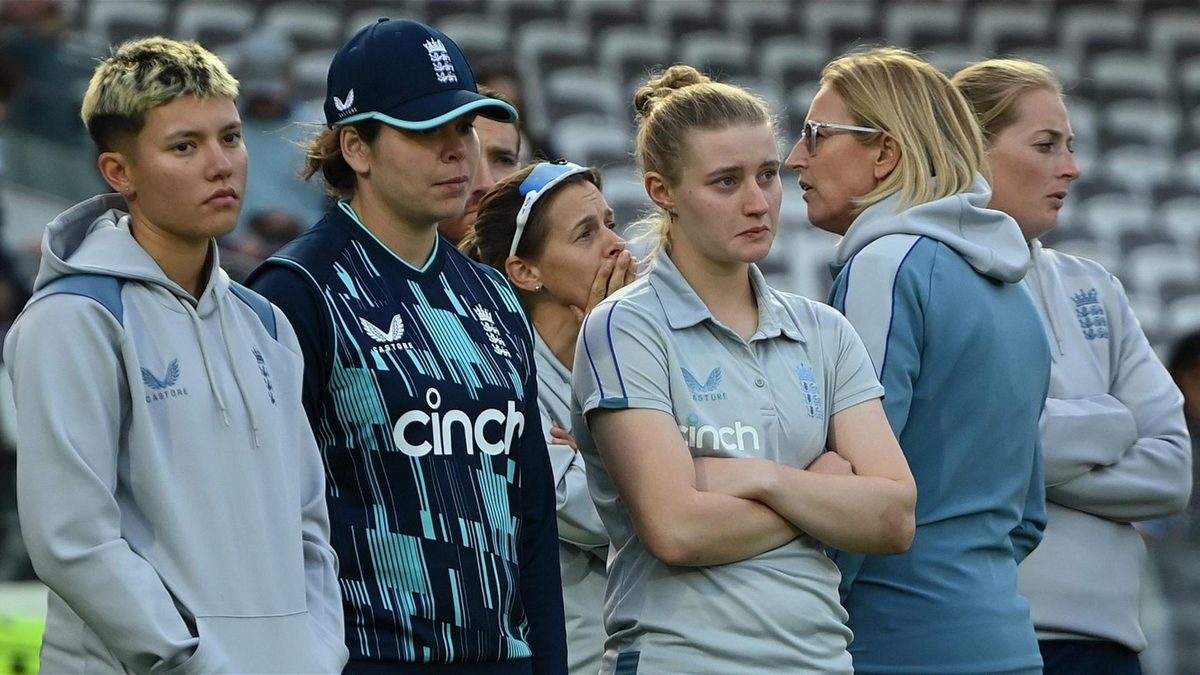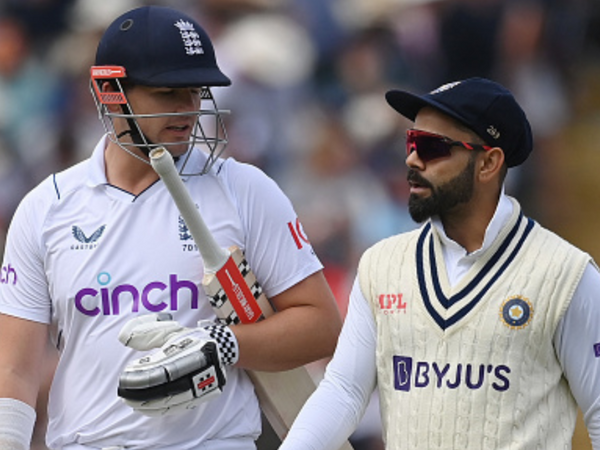
Katya Witney assesses where England’s women’s side are at following an up and down home summer.
After succumbing to India 3-0 in the ODI series which marked the end of the international summer, England go in to a long winter facing several questions.
They are without a coach – Lisa Keightley having departed the scene – and struggled for leadership during India’s visit.
Contesting both series’ without their captain and vice-captain, England looked directionless at times in the field. Winning the T20I series 2-1 showed the potential in their young squad, with plaudits falling to Alice Capsey in particular for looking so assured under the pressure of the international arena. But the nature of their ODI series defeat, masked somewhat by its controversial end, will alarm those in the camp.
As it stands, England’s next challenge is the T20 World Cup in South Africa in February, followed by a landmark Ashes series against the all-conquering Australians. If they are to challenge Meg Lanning’s juggernaut in either competition, the winter cannot be wasted and answers must be found to the questions the summer has posed.
How best to look after England’s young talent?
The undoubted positive of England’s summer has been the speed at which many of England’s young players have taken to the international arena.
Alice Capsey’s starring role throughout the summer not only showed her to be someone who can cope with the pressures and demands of international cricket but a player who looks totally at home playing for England. Her confidence and skill level make her England’s most exciting prospect; giving her the freedom and space to develop her game is the crucial next step with an extended run next summer in England’s top order across all three formats.
Nurturing England’s young bowlers is a more complex task. Issy Wong has undoubtedly been the pick of the debutant bowlers this summer following on from her breakthrough domestic season last year. However, the inexperience in the bowling attack was masterfully exposed by Harmanpreet Kaur at Canterbury, showing the need for caution, particularly with Freya Kemp and Lauren Bell. Both are excellent prospects but in need of strong leadership and experience to rely on while they build their international careers.
With question marks over Katherine Brunt’s international future, it’s imperative that England form a core bowling group with the necessary balance of experience and potential. Kate Cross’s exceptional performance in the final ODI showed once more her capability to lead the attack, and Sophie Ecclestone’s ever-present excellence as England’s lynchpin spinner takes on further importance.
Who are the leaders, beyond Knight?
Nat Sciver’s maiden Test hundred in the opening international fixture of the summer cemented her status as the world’s premier all-rounder following her superb innings in a losing cause in the World Cup final. Sciver’s value to England is not in doubt.
Yet, giving her the captaincy for the Commonwealth Games campaign left her with the responsibilities of being England’s anchor in the middle order, sixth bowler and leader. Being thrown in with little international captaincy experience having only been given the vice-captaincy last year proved too much. Sciver wasn’t the primary reason for England’s failure at the Games, but when things did start to go wrong, the calmness, experience and unity the side are used to with Heather Knight on the field was missing.
With Sciver taking a mental health break for the India series, questions should be asked as to whether she should retain the vice-captaincy on her return. As a player, she’s too important to England to burden unnecessarily, but other options for the vice-captaincy are limited. Amy Jones had a poor series as captain against India, in which her presence was hardly felt even with England sorely in need of some seniority. Jones openly stated the captaincy was not something she desired and, given her role behind the stumps and struggles with her own form, she is also not a viable option to serve as Knight’s deputy.
It’s a difficult period for captaincy planning with many of the players most sure of their place in England’s XI still finding their way in international cricket. England will need to have a solid leadership structure in place to guide them through a World Cup and a tricky summer against Australia.
Who takes over from Lisa Keightley?
Keightley announced the decision not to renew her contract with England after the Commonwealth Games, citing the extended period of time away from her wife and family in the role. Over her two and a half years in charge, Keightley guided England to the final of the ODI World Cup last winter and to the semi-finals of the T20 World Cup and Commonwealth Games, but also saw England fail to regain the Ashes, with defeat to India bringing her tenure to a disappointing end.
After Charlotte Edwards, the early frontrunner for the job, ruled herself out of contention to continue to focus on her role with the Southern Vipers and Sydney Sixers, no obvious candidate stands out to take up the position, paving the way for someone from either the men’s game or women’s regional game to take up the mantel.
A tough first two assignments await the successful candidate with a World Cup in South Africa scheduled to take place in February followed by an Ashes series beginning in June. With five months between now and England’s first T20 World Cup match, the winter provides an opportunity for reflection and planning. Whoever takes on the role needs to implement a clear structure and direction ahead of two big campaigns.








